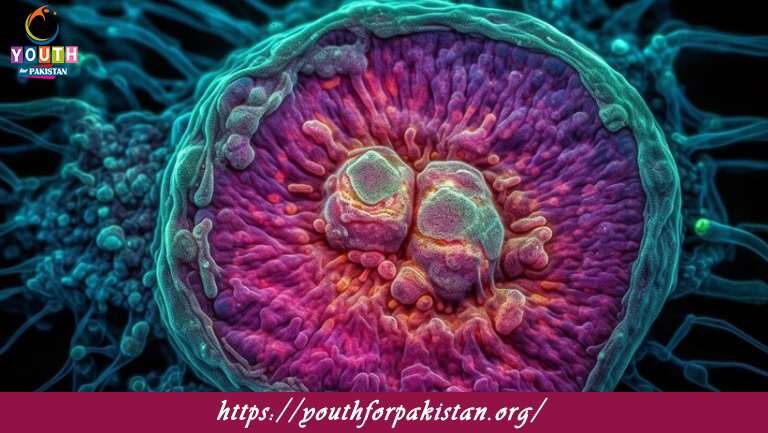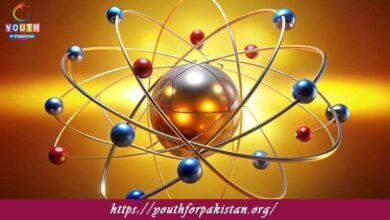9th Class Biology Chapter 4 MCQs with Answers

Reinforce your concepts of biology with “Cells and Tissues MCQs” for 9th-class students. This chapter is devoted to the structure, function, and organization of cells and tissues in living organisms. Have a glimpse over plant and animal tissues, and try judging your grasp over major concepts with these well-thought-of MCQs, which will present an easy and efficient mode of learning.
Which of the following is the basic structural and functional unit of all living organisms?
a) Tissue
b) Organ
c) Cell
d) Organism
The cell membrane is primarily composed of:
a) Proteins
b) Carbohydrates
c) Nucleic acids
d) Lipids
Which organelle is responsible for the production of energy in the cell?
a) Endoplasmic reticulum
b) Golgi apparatus
c) Mitochondria
d) Lysosome
The genetic material of a cell is located in the:
a) Nucleus
b) Mitochondria
c) Endoplasmic reticulum
d) Golgi apparatus
Which type of tissue covers the body’s surfaces and lines internal organs and cavities?
a) Epithelial tissue
b) Connective tissue
c) Muscle tissue
d) Nervous tissue
Which organelle is responsible for protein synthesis in the cell?
a) Nucleus
b) Endoplasmic reticulum
c) Mitochondria
d) Ribosome
Which of the following is the control center of the cell that contains the genetic material?
a) Endoplasmic reticulum
b) Golgi apparatus
c) Nucleus
d) Lysosome
The process by which cells specialize to perform specific functions is called:
a) Mitosis
b) Meiosis
c) Differentiation
d) Reproduction
Which organelle is responsible for breaking down waste materials in the cell?
a) Nucleus
b) Lysosome
c) Mitochondria
d) Ribosome
Which type of tissue provides support and protection to various body structures?
a) Epithelial tissue
b) Connective tissue
c) Muscle tissue
d) Nervous tissue
The fluid-filled organelle that stores water, nutrients, and waste materials in plant cells is called the:
a) Nucleus
b) Vacuole
c) Mitochondria
d) Golgi apparatus
Which type of tissue is responsible for voluntary movements in the body?
a) Epithelial tissue
b) Connective tissue
c) Muscle tissue
d) Nervous tissue
The cell organelle responsible for the synthesis of lipids and detoxification of drugs is the:
a) Nucleus
b) Mitochondria
c) Endoplasmic reticulum
d) Golgi apparatus
Which organelle is responsible for packaging and modifying proteins for transport within the cell?
a) Nucleus
b) Endoplasmic reticulum
c) Lysosome
d) Golgi apparatus
Which type of tissue is specialized for communication and coordination in the body?
a) Epithelial tissue
b) Connective tissue
c) Muscle tissue
d) Nervous tissue
Which organelle is responsible for photosynthesis in plant cells?
a) Nucleus
b) Mitochondria
c) Chloroplast
d) Golgi apparatus
The process by which cells make an identical copy of their DNA is called:
a) Mitosis
b) Meiosis
c) Replication
d) Transcription
Which type of tissue supports, protects, and connects different structures in the body?
a) Epithelial tissue
b) Connective tissue
c) Muscle tissue
d) Nervous tissue
The process by which cells divide to form new cells is called:
a) Mitosis
b) Meiosis
c) Reproduction
d) Differentiation
The fluid-filled organelle found in plant cells that helps maintain cell shape and structure is called the:
a) Vacuole
b) Nucleus
c) Mitochondria
d) Golgi apparatus
Which type of tissue lines the internal surfaces of organs and cavities?
a) Epithelial tissue
b) Connective tissue
c) Muscle tissue
d) Nervous tissue
The process by which cells with half the usual number of chromosomes are produced is called:
a) Mitosis
b) Meiosis
c) Replication
d) Transcription
The organelle responsible for protein synthesis in the cell is the:
a) Nucleus
b) Endoplasmic reticulum
c) Mitochondria
d) Ribosome
Which type of tissue allows rapid communication between different parts of the body?
a) Epithelial tissue
b) Connective tissue
c) Muscle tissue
d) Nervous tissue
The process by which cells with half the usual number of chromosomes fuse to form a new cell is called:
a) Mitosis
b) Meiosis
c) Replication
d) Fertilization
Which type of tissue is responsible for binding and supporting other tissues in the body?
a) Epithelial tissue
b) Connective tissue
c) Muscle tissue
d) Nervous tissue
The process by which a cell engulfs and takes in materials from its surroundings is called:
a) Exocytosis
b) Endocytosis
c) Diffusion
d) Osmosis
Which type of tissue provides covering and protection for various body surfaces?
a) Epithelial tissue
b) Connective tissue
c) Muscle tissue
d) Nervous tissue
The process by which a cell expels materials from its interior to the external environment is called:
a) Exocytosis
b) Endocytosis
c) Diffusion
d) Osmosis
Which type of tissue is responsible for involuntary movements in the body?
a) Epithelial tissue
b) Connective tissue
c) Muscle tissue
d) Nervous tissue
The process by which cells release energy from glucose in the presence of oxygen is called:
a) Mitosis
b) Meiosis
c) Respiration
d) Fermentation
Which type of tissue contains cells that can contract and generate force?
a) Epithelial tissue
b) Connective tissue
c) Muscle tissue
d) Nervous tissue
The process by which cells release energy from glucose without the need for oxygen is called:
a) Mitosis
b) Meiosis
c) Respiration
d) Fermentation
Which type of tissue is responsible for storing fat and providing insulation to the body?
a) Epithelial tissue
b) Connective tissue
c) Muscle tissue
d) Adipose tissue
The process by which cells exchange materials with their external environment is called:
a) Respiration
b) Excretion
c) Diffusion
d) Osmosis
Which type of tissue contains cells specialized for carrying electrical impulses?
a) Epithelial tissue
b) Connective tissue
c) Muscle tissue
d) Nervous tissue
The process by which cells divide to produce gametes is called:
a) Mitosis
b) Meiosis
c) Reproduction
d) Differentiation
Which type of tissue provides the framework and support for organs in the body?
a) Epithelial tissue
b) Connective tissue
c) Muscle tissue
d) Nervous tissue
The process by which cells take in water and dissolve substances from their surroundings is called:
a) Exocytosis
b) Endocytosis
c) Diffusion
d) Osmosis
Which type of tissue is responsible for transmitting nerve impulses throughout the body?
a) Epithelial tissue
b) Connective tissue
c) Muscle tissue
d) Nervous tissue
The process by which cells divide to produce identical daughter cells is called:
a) Mitosis
b) Meiosis
c) Replication
d) Transcription
Which type of tissue is responsible for protection and support in the skin, nails, and hair?
a) Epithelial tissue
b) Connective tissue
c) Muscle tissue
d) Nervous tissue
The process by which cells release large molecules to the external environment is called:
a) Exocytosis
b) Endocytosis
c) Diffusion
d) Osmosis
Which type of tissue is responsible for cushioning and protecting organs and joints in the body?
a) Epithelial tissue
b) Connective tissue
c) Muscle tissue
d) Cartilage tissue
The process by which cells produce new proteins based on the information encoded in the
DNA is called:
a) Mitosis
b) Meiosis
c) Replication
d) Transcription
Which type of tissue is responsible for producing and storing fat in the body?
a) Epithelial tissue
b) Connective tissue
c) Muscle tissue
d) Adipose tissue
The process by which cells divide to form sperm and egg cells is called:
a) Mitosis
b) Meiosis
c) Reproduction
d) Differentiation
Which type of tissue is responsible for supporting and protecting the organs of the body?
a) Epithelial tissue
b) Connective tissue
c) Muscle tissue
d) Nervous tissue
The process by which cells use oxygen to break down glucose and produce energy is called:
a) Mitosis
b) Meiosis
c) Respiration
d) Fermentation
Which type of tissue is responsible for transmitting electrical signals and controlling body functions?
a) Epithelial tissue
b) Connective tissue
c) Muscle tissue
d) Nervous tissue
The process by which cells release energy from glucose without the use of oxygen is called:
a) Mitosis
b) Meiosis
c) Respiration
d) Fermentation
Which type of tissue is responsible for storing energy in the form of fat and insulating the body?
a) Epithelial tissue
b) Connective tissue
c) Muscle tissue
d) Adipose tissue
The process by which cells divide to produce eggs and sperm is called:
a) Mitosis
b) Meiosis
c) Replication
d) Transcription
Which type of tissue is responsible for binding and supporting various structures in the body?
a) Epithelial tissue
b) Connective tissue
c) Muscle tissue
d) Nervous tissue
The process by which cells exchange materials with their surroundings through the cell membrane is called:
a) Respiration
b) Excretion
c) Diffusion
d) Osmosis
Which type of tissue is responsible for generating heat and providing movement in the body?
a) Epithelial tissue
b) Connective tissue
c) Muscle tissue
d) Nervous tissue
The process by which cells produce proteins based on the information stored in the DNA
is called:
a) Mitosis
b) Meiosis
c) Replication
d) Transcription
Which type of tissue is responsible for supporting and protecting the bones of the body?
a) Epithelial tissue
b) Connective tissue
c) Muscle tissue
d) Bone tissue
The process by which cells divide to produce identical daughter cells with the same number of chromosomes is called:
a) Mitosis
b) Meiosis
c) Replication
d) Transcription
Which type of tissue is responsible for transmitting electrical signals and coordinating body functions?
a) Epithelial tissue
b) Connective tissue
c) Muscle tissue
d) Nervous tissue
If you are interested to enhance your knowledge regarding Physics, Chemistry, Biology, and Computer please click on the link of each category, you will be redirected to dedicated website for each category.





